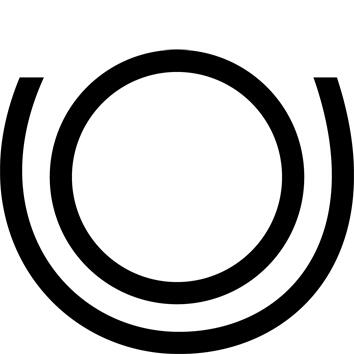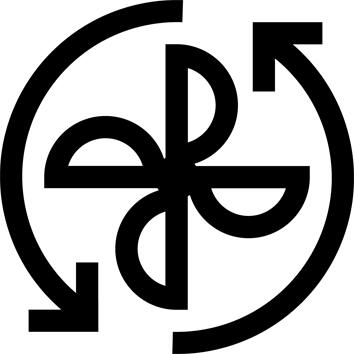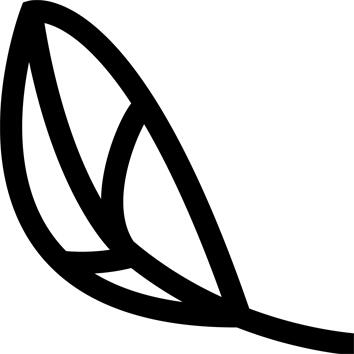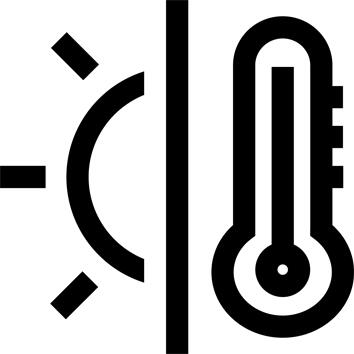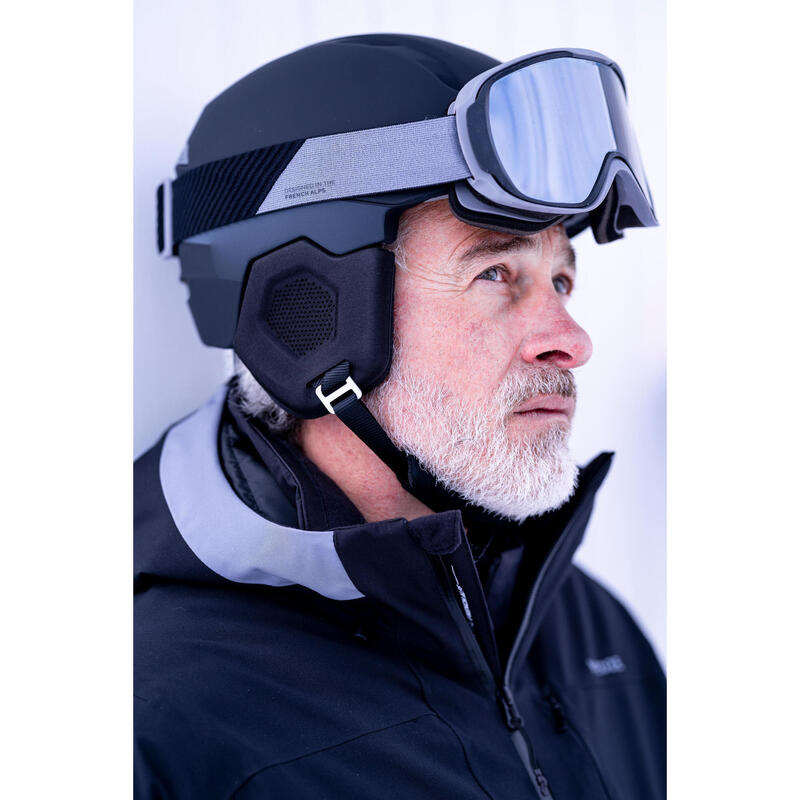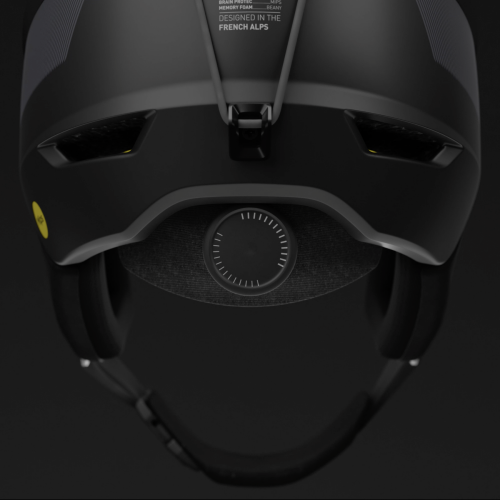ANTI-ROTATIONAL
The PST 900 ski helmet features the MIPS anti-rotational system. The aim of MIPS technology is to reduce the rotational energy of an impact and thus limit the risk of brain damage.
The low-friction layer (yellow layer under the helmet cap) allows a multidirectional movement of 10 to 15mm during certain oblique impacts, aimed at reducing the rotational force transmitted to the head and brain.
Semi-rigid ears
We've fitted our PST 900 MIPS with semi-rigid shell ears. They provide excellent ear envelopment (no cartilage-related pain and excellent hearing) and fit the face perfectly (better support and no air intake).
Bonnet
The cap of our PST 900 MIPS helmet is not the warmest in our range. As this helmet is designed for intensive skiers, we wanted it to be airy and breathable. Zones (in light gray) with memory foam ensure a perfect fit and reduce uncomfortable pressure points.
Ventilation
The PST 900 MIPS helmet is highly efficient in terms of thermal comfort. It features adjustable ventilation (open/closed) for excellent thermal comfort in all conditions.
Internal ventilation ducts with rear extraction grille provide excellent airflow.
TIGHTENING WHEEL
The tightening knob is an essential part of your helmet's fit. This system allows easy, precise adjustment at all times, thanks to a knob that's accessible even when wearing ski gloves. The result is maximum comfort and safety. Turn the knob to the right to tighten, to the left to loosen.
IN-MOLD CONSTRUCTION
This type of construction, known as In-Mold, incorporates a polycarbonate outer shell molded directly onto the EPS cap. The inner EPS shell is designed to absorb shock in the event of impact. The whole unit is extremely lightweight. We advise you to change your ski helmet every 5 years at most, provided it has not suffered a major impact in the meantime.
EN 1077 standard
European standard EN 1077:2007 applies to helmets used for head protection during alpine skiing or snowboarding. It is characterized by tests on impact absorption capacity and penetration resistance. There are 2 categories:
- Class A: Protects the top and back of the head, as well as the ears and side of the head.
- Class B: Protects the top and back of the head, but does not cover the ears.
SIZE SELECTION?
* Measure your head circumference in centimetres (middle of forehead, just above the ears).
* Then choose the size that covers this measurement.
Example: if your head circumference is 56cm, then try a helmet size 55-59cm.
TESTING
Take as much time as you need for the fitting. You don't want to feel any uncomfortable points. If you do, try another model. Always remember to try on your helmet with your mask, because not all helmets fit all masks. A helmet "matches" a ski mask when there is no air space between the top of the mask and the helmet.
HEADPHONE SETTINGS
During practice, the ski helmet must be properly adjusted and fitted:
* It must be chosen in the right size.
* The head size must be adjusted using the tightening knob.
* The chinstrap must be correctly adjusted.
It's a bit like the seatbelt in a car: if it's too loose, it won't do its job and you'll be less well protected.
SAFETY
Avoid wearing a thick cap under your helmet, as it will pull your helmet away from your head and you will be less well protected.
Choose a cap or balaclava under your helmet, which are very thin and won't compromise your safety. A helmet keeps you warm, so there's often no need to add a layer. You should also avoid adding a camera to your helmet, as this can compromise safety. The standard does not take into account the addition of elements on the helmet.
EASE OF MAINTENANCE
Removable comfort foam, machine washable at 30°C. The ears of the PST 900 MIPS are not detachable.
Use only soapy water and a soft cloth to clean your helmet.
Return conditions (Specific product: Personal protective equipment)
Make sure that the product is suitable for you.
If not, return it in accordance with our conditions: with instructions, labels and, if applicable, its original packaging; it could be recycled.
